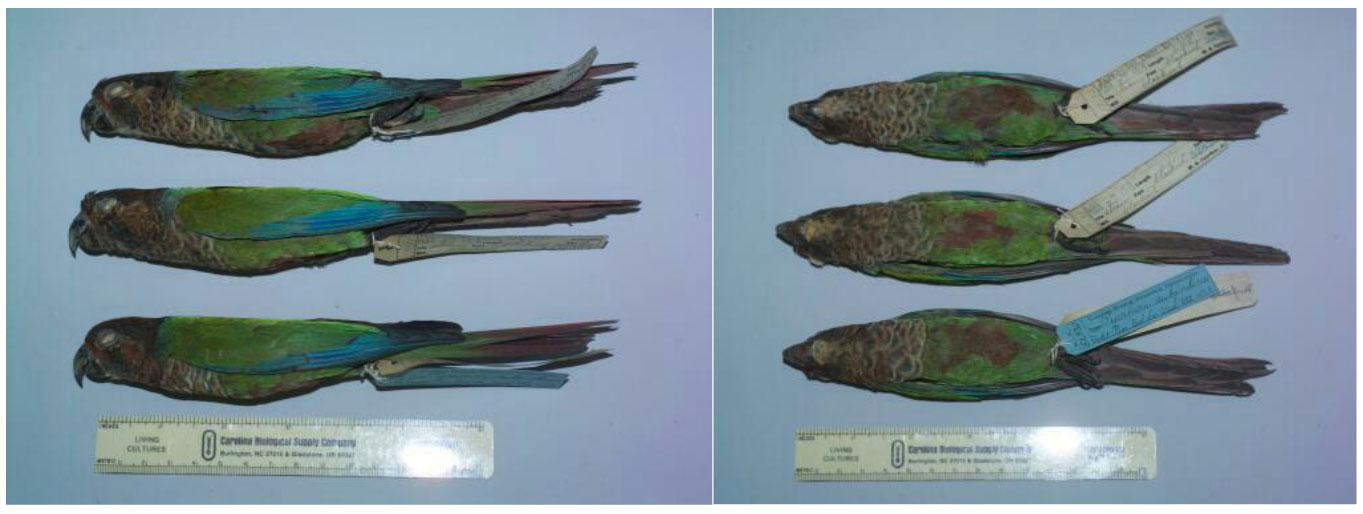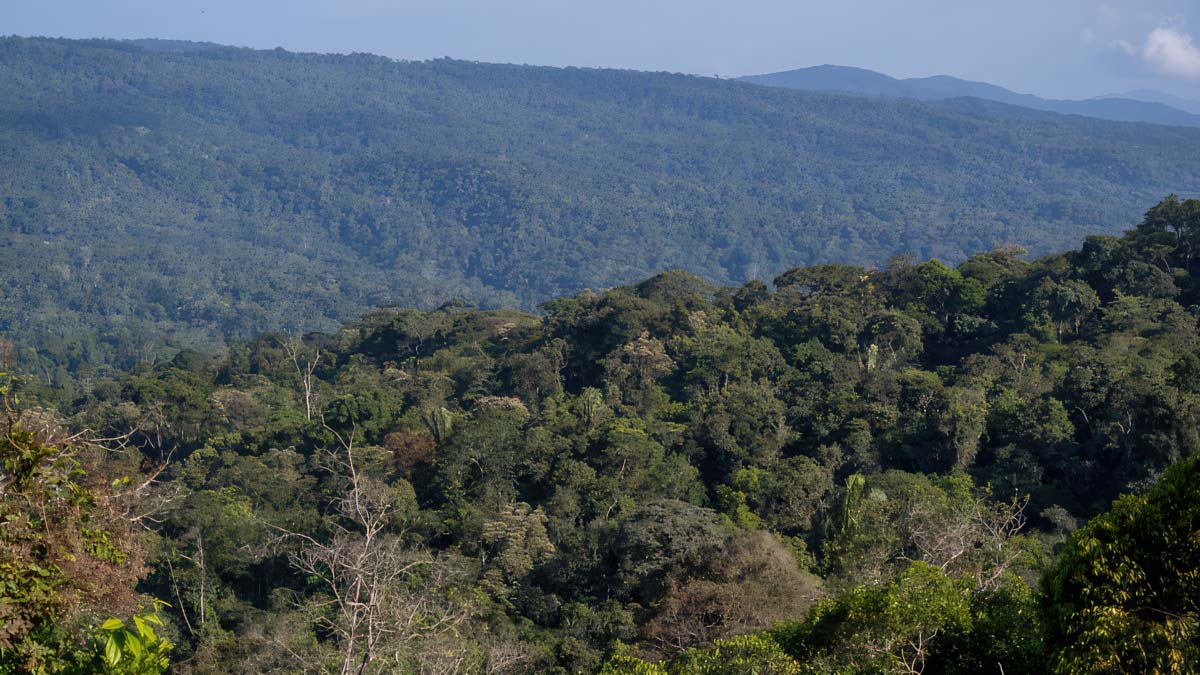Sinú Parakeet is one of the 25 most sought-after 'lost' bird species in the world, according to The Search for Lost Birds programme of the American Bird Conservancy and others. These birds have either not been seen for many years, or may be known only from drawings or museum specimens, all of which engenders continuing doubts about their existence.
Sinú Parakeet is considered by some taxonomies (but not IOC) to be a species isolated from the Painted Parakeet complex, being restricted to the Upper Valley of the Sinú River in the south of the Department of Córdoba in Colombia. If indeed it still exists, BirdLife International estimates a population of fewer than 49 individuals, and it is listed on the IUCN Red List of Threatened Species as Critically Endangered. The dire situation of this parakeet is mainly due to widespread habitat destruction across its historical geographical distribution.

Sinú Parakeet is known only from museum specimens (Carnegie Museum).
What we do know is that there are 20 preserved specimens distributed across three museums but, based on continuing reports of its existence, almost two decades ago the Loro Parque Fundación began its support of efforts to try to find living Sinú Parakeets. Searches of the Upper Sinú Valley in the years 2004-2006 failed to find the species, but further reports stimulated another round of searching starting in 2021. The new searches are being undertaken by ornithologists of the Córdoba Ornithological Society (SOC), and they have just produced a report on their latest expedition undertaken in 2023. Searches by the SOC in 2021 did not find Sinú Parakeets, but two local people were able to describe with certainty and precision the characteristics of that species, and it is even known locally as 'Catanica'. Furthermore, the searches confirmed the presence of 27 other bird species with previous historical records of up to 70 years ago. These results gave further encouragement that there are still species to find, including Sinú Parakeet.
The 2023 search took place in the Paramillo Natural National Park in the area of Cerro Murrucucú, which is part of the San Jerónimo mountain range and the foothills of the Western Cordillera of the Andes. This is an area of tropical humid forest ecosystems with continuous vegetation. The forest is interrupted by isolated areas of cultivation areas, dense shrubby understory and some extensive patches of Colombian timber bamboo. The SOC field team made exhaustive searches and observations from vantage points on an altitudinal gradient between 400 m and 1,000 m asl. Furthermore, by installing automated recording units in the habitats, for the first time in this area Passive Acoustic Monitoring (PAM) was included as a search method. In order to minimise 'false absence', playback methodology so as to encourage a response from the species and increase the probability of detection. Given that there is no acoustic record of Sinú Parakeet, it was necessary to analyse and use the vocalizations of a sister species of the Painted Parakeet complex.

Forest in southern Córdoba, Colombia (Carlos Bran Castrillón / SOC)
Despite using the additional tool of PAM, the 2023 expedition did not detect Sinú Parakeets, but did record the presence of 10 other psittacine species, including the Critically Endangered Great Green Macaw. This large macaw species has an estimated total population of between 770 and 1,540, with perhaps no more than 155 in Colombia, thus highlighting the real importance of the individuals in the Upper Sinú Valley. Six other parrots were detected, these being Orange-winged Amazon, Southern Mealy Amazon, Red-lored Amazon, Orange-chinned Parakeet, Brown-throated Parakeet and Spectacled Parrotlet.
Another Critically Endangered species recorded was Blue-billed Curassow and, of the total 299 species of birds found by the expedition, 21 species were in some category of threat. Of the 299 species, 3% were endemic to Colombia and 8% were near-endemic. Eleven species detected were considered new records for the Department of Córdoba, and overall, the results obtained confirm the notable avian diversity of the region. These findings indicate that the biological diversity in this area is not yet fully documented and further sampling efforts are required for a better understanding of the ecological importance of the area.
There are still large tracts of tropical humid forest in a good state of conservation, which could provide suitable habitat for Sinú Parakeet. With or without the parakeet, conservation of the region's forests should be promoted through bird-tourism, forest restoration and sustainable production alternatives. With this in mind, sustainable development in the area has been prioritized by the national government as a Development Plan with Territorial Focus within Colombia's Post-Conflict framework.

